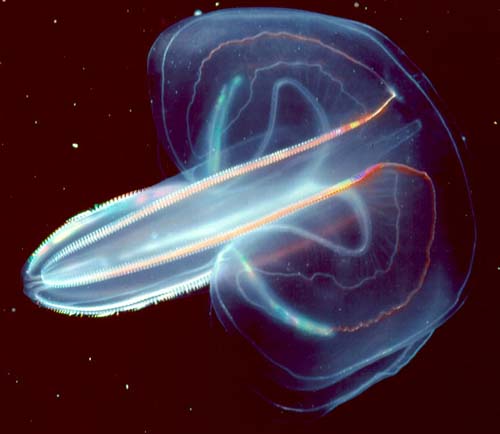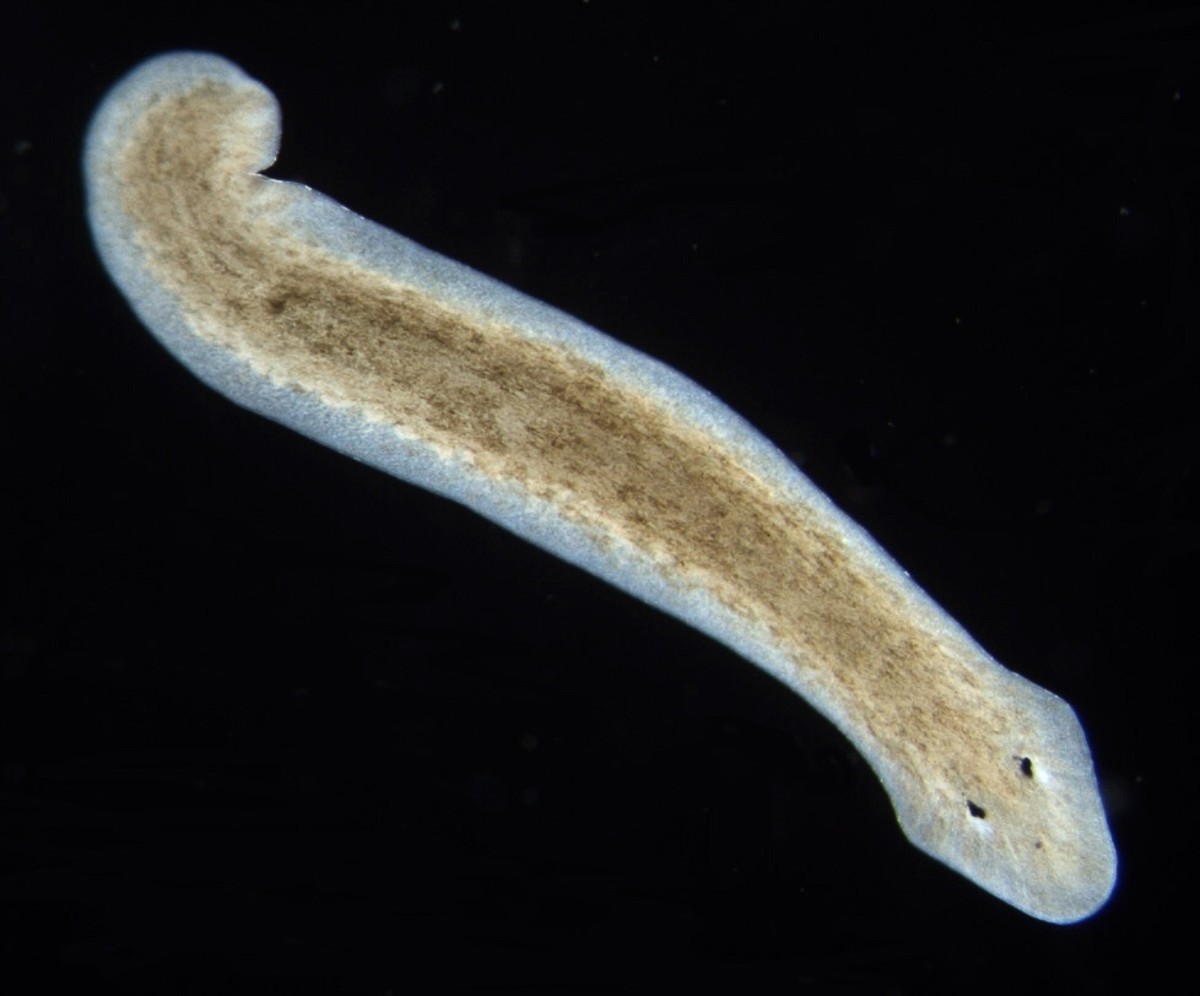The three main modes of movement in unicellular eukaryotes include cilia, flagella, and these
What are pseudopodia?
These are the feeding cells of sponges, also called "collar cells"
What are choanocytes?
Watch out! The tentacles of sea jellies are studded with stinging weapons called this
What are nematocysts?
What are comb jellies?
The common man may call platyhelminthes this
What are flat worms?
All unicellular eukaryotes contain these organelles, which were originally free-living bacteria
What are mitochondria?
Although multicellular, sponges lack this type of organization
What are tissues?
Sea anemones are members of this Cnidarian class.
What is Anthozoa?
While not the only animals that can do this, ctenophores are remarkable in that most of them do this, so that they may be seen even on the darkest nights 
What is bioluminescence?
The body cavity of platyhelminthes is not lined with endoderm, but is instead nestled within the mesoderm. This term describes that.
What is acoelomate?
Some unicellular eukaryotes contain these organelles, which were originally free-living bacteria that could photosynthesize
What are chloroplasts?
Calcarous or siliceous crystalline structures, as seen here, are found embedded in sponge walls, and are called this 
What are spicules?
What is Class Scyphozoa?
Unlike cnidarians, ctenophora have an anus, which means that their digestive system can be described as this
What is complete?
Platyhelminthes possess ectoderm, mesoderm, and endoderm, which means they are this
What is triploblastic?
This disease is caused by a plasmodium that is transmitted from cats, via feces, to humans
What is Toxoplasmosis?
The three types of sponge forms include asconoid, syconoid, and this
What is leuconoid?
Cnidarians can often exist in two main forms: the medusa and this
What is the polyp?
Ctenophora move through water by beating rows of these
What are cilia?
This class includes the liver flukes.
What is Trematoda?
All unicellular eukaryotes contain this important cellular structure, which contains and protects the DNA
What is the nucleus?
Sponges pull water through ostia with the flow generated by this collar cell structure
What is the flagellum?
Cnidarians do not have a central nervous system, but they do have this, a system that we also have in our guts
What is a nerve net?
What is biradial symmetry?
This class includes our adorable friends, the planaria, as seen here: 
What is Turbellaria?